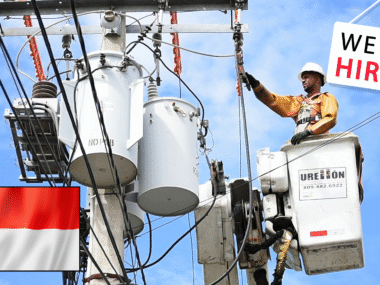Learn how to get a marriage visa in the United States for foreigners with this step-by-step guide to the process.
Obtaining a marriage visa in the United States allows foreign nationals to live with their U.S. citizen or permanent resident spouse in the country. The process is detailed, requiring specific documentation, adherence to immigration laws, and patience.
This guide provides a comprehensive, step-by-step explanation of how to secure a marriage visa, ensuring compliance with U.S. immigration requirements. Whether you’re planning to marry a U.S. citizen or are already married, this article outlines the key steps, eligibility criteria, and tips to navigate the process successfully.
Understanding the Marriage Visa Options
The U.S. offers two primary marriage-based visa options for foreigners: the K-1 Fiancé(e) Visa and the CR-1/IR-1 Spouse Visa. Each serves a distinct purpose, depending on whether the marriage has already occurred or is planned.
K-1 Fiancé(e) Visa
The K-1 visa is for foreign nationals engaged to a U.S. citizen who plan to marry in the U.S. within 90 days of arrival. After marriage, the foreign spouse can apply for adjustment of status to become a permanent resident.
CR-1/IR-1 Spouse Visa
The CR-1 (Conditional Resident) or IR-1 (Immediate Relative) visa is for foreign nationals already married to a U.S. citizen or lawful permanent resident. The CR-1 applies to marriages less than two years old, while the IR-1 is for marriages over two years. This visa grants conditional or permanent residency upon entry.
Both options lead to lawful permanent residency (a green card), but the processes differ in timelines, requirements, and application steps.
Related Post:
- How to Get a Marriage Visa in the UK for Foreigners
- How to Get a Marriage Visa in Singapore for Foreigners
- How to Get a Marriage Visa in Norway for Foreigners
- How to Get Marriage Visa in Luxembourg for Foreigners
Eligibility Requirements for a Marriage Visa
To qualify for a marriage visa, both the U.S. citizen or permanent resident and the foreign national must meet specific criteria:
-
Valid Relationship: The relationship must be genuine, not solely for immigration purposes. Evidence like photos, communication records, or joint travel itineraries may be required to prove authenticity.
-
Legal Marriage: For the CR-1/IR-1 visa, a valid marriage certificate is necessary. For the K-1 visa, the couple must intend to marry within 90 days of the foreign fiancé(e)’s arrival.
-
U.S. Sponsor Requirements: The U.S. citizen or permanent resident must meet income requirements (typically 125% of the federal poverty guidelines) to sponsor their spouse or fiancé(e).
-
No Legal Barriers: Both parties must be free to marry (e.g., no existing marriages) and meet age requirements (typically 21 for the U.S. sponsor in K-1 cases).
-
Admissibility: The foreign national must not have a criminal record or immigration violations that render them inadmissible to the U.S.
Meeting these requirements is critical to avoid delays or denials during the application process.
Step-by-Step Process for the K-1 Fiancé(e) Visa
The K-1 visa process involves several steps, starting with the U.S. citizen filing a petition and ending with the foreign fiancé(e) entering the U.S. Here’s how it works:
Step 1: File Form I-129F, Petition for Alien Fiancé(e)
The U.S. citizen submits Form I-129F to the U.S. Citizenship and Immigration Services (USCIS). This petition establishes the relationship’s legitimacy. Required documents include:
-
Proof of U.S. citizenship (e.g., passport, birth certificate).
-
Evidence of the relationship (e.g., photos, letters, or travel records).
-
Proof the couple has met in person within the last two years (with limited exceptions, such as cultural or religious restrictions).
-
Filing fee (check USCIS website for current fees).
Processing typically takes 6–12 months, depending on USCIS workload.
Step 2: Visa Application (DS-160)
Once the I-129F is approved, the foreign fiancé(e) completes the DS-160 online visa application through the U.S. Department of State. They must provide personal details, travel history, and relationship information.
Step 3: Gather Supporting Documents
The foreign fiancé(e) must collect:
-
Valid passport.
-
Birth certificate.
-
Divorce or death certificates (if previously married).
-
Police clearance certificates from countries of residence.
-
Medical examination results from an approved physician.
-
Affidavit of Support (Form I-134) from the U.S. citizen, proving financial ability to support the fiancé(e).
Step 4: Attend the Visa Interview
The foreign fiancé(e) attends an interview at the U.S. embassy or consulate in their home country. The consular officer assesses the relationship’s authenticity and the applicant’s admissibility. Be prepared to answer questions about the relationship and provide supporting evidence.
Step 5: Enter the U.S. and Marry
If approved, the K-1 visa is issued, allowing entry to the U.S. for 90 days. The couple must marry within this period. After marriage, the foreign spouse applies for adjustment of status using Form I-485 to obtain a green card.
Step-by-Step Process for the CR-1/IR-1 Spouse Visa
The CR-1/IR-1 visa process is for those already married to a U.S. citizen or permanent resident. Here’s how to apply:
Step 1: File Form I-130, Petition for Alien Relative
The U.S. citizen or permanent resident files Form I-130 with USCIS. Required documents include:
-
Marriage certificate.
-
Proof of U.S. citizenship or permanent residency.
-
Evidence of a bona fide marriage (e.g., joint bank accounts, lease agreements, or photos).
-
Filing fee (check USCIS website for current fees).
Processing times vary, typically 12–18 months for U.S. citizen sponsors and longer for permanent residents.
Step 2: National Visa Center (NVC) Processing
Once the I-130 is approved, the case moves to the NVC. The foreign spouse submits:
-
Form DS-260 (online immigrant visa application).
-
Affidavit of Support (Form I-864) from the U.S. sponsor, proving financial responsibility.
-
Supporting documents, including passport, birth certificate, marriage certificate, police clearances, and medical exam results.
Step 3: Attend the Visa Interview
The foreign spouse attends an interview at the U.S. embassy or consulate. The officer verifies the marriage’s legitimacy and the applicant’s eligibility. Bring all required documents and be prepared to answer detailed questions about the relationship.
Step 4: Receive the Visa and Enter the U.S.
If approved, the visa is issued, and the foreign spouse can enter the U.S. as a conditional (CR-1) or permanent (IR-1) resident. For CR-1 visas, the couple must file Form I-751 within two years to remove the conditional status and obtain a 10-year green card.
Key Documents Checklist for Marriage Visas
Both K-1 and CR-1/IR-1 visas require similar documentation. Prepare the following:
-
Valid passport.
-
Birth certificate.
-
Marriage certificate (for CR-1/IR-1) or proof of intent to marry (for K-1).
-
Divorce or death certificates (if applicable).
-
Police clearance certificates.
-
Medical examination results.
-
Affidavit of Support (Form I-134 for K-1, I-864 for CR-1/IR-1).
-
Evidence of a genuine relationship (photos, communication records, joint financial documents).
-
Filing fees (varies by form and visa type).
Organize documents in advance to avoid delays.
Common Challenges and How to Avoid Them
The marriage visa process can be complex, and errors may lead to delays or denials. Here are common challenges and solutions:
-
Insufficient Evidence of Relationship: Provide robust proof, such as photos, travel records, or shared financial responsibilities. Avoid submitting vague or incomplete evidence.
-
Income Requirements: The U.S. sponsor must meet income thresholds. If they don’t, a co-sponsor (e.g., a family member) can submit an Affidavit of Support.
-
Delays in Processing: Check USCIS and NVC processing times regularly and submit complete, accurate applications to minimize delays.
-
Interview Preparation: Practice answering questions about the relationship and bring all required documents to the interview.
-
Legal Inadmissibility: Address any criminal or immigration issues with a qualified immigration attorney before applying.
Tips for a Successful Marriage Visa Application
-
Hire an Immigration Attorney: While not mandatory, an attorney can guide you through complex cases or legal issues.
-
Be Honest: Misrepresenting facts or providing fraudulent documents can lead to permanent bans from the U.S.
-
Stay Organized: Keep a checklist of documents and deadlines to ensure timely submissions.
-
Monitor Case Status: Use USCIS’s online tools to track your petition or visa application.
-
Prepare for the Interview: Review your application and practice answering questions confidently.
Costs Associated with Marriage Visas
The marriage visa process involves several fees:
-
Form I-129F (K-1): Approximately $535 (check USCIS for updates).
-
Form I-130 (CR-1/IR-1): Approximately $535.
-
Visa Application (DS-160/DS-260): $265 for K-1, $325 for CR-1/IR-1.
-
Medical Exam: Varies by country ($200–$500).
-
Adjustment of Status (I-485): Approximately $1,225 (for K-1 visa holders).
-
Other Costs: Travel, document translations, and attorney fees (if applicable).
Plan your budget to cover these expenses.
Processing Times and What to Expect
Processing times depend on USCIS and NVC workloads, the visa type, and the applicant’s country. Generally:
-
K-1 Visa: 6–12 months for I-129F approval, plus 3–6 months for visa processing.
-
CR-1/IR-1 Visa: 12–18 months for I-130 approval, plus 3–6 months for NVC and visa processing.
Check the USCIS website or contact the NVC for current estimates.






